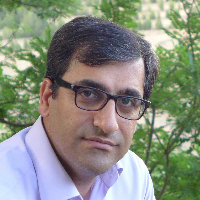A Proposal for Classifying the Poetic Forms of Persian Literature Based on the Attitude of the Predecessors
Poetic forms in classical Persian literature can be classified into three categories. 1. The formal forms, which own a lofty language, exuberant images and illustrated prosody which composed mainly for the courtiers. 2. The semi-formal forms in which, although the great poets made attempts and created masterpieces, the court favored them less than expected. 3. The informal forms which own a plain language, quick-to-understand literary devices and syllabic weight whose composers are usually unknown and have been written for the masses. The formal poetic forms were often well-regarded and rewarded by the court. Such regards and rewards would reach the semi-formal poetic forms sometimes, but not extended to the informal poetic forms since these forms were a part of popular literature and they were not through the written literature. By delving into the works of the past, we see that the predecessors accepted and adhered to this classification as an unwritten law. The present study, in an analytical-descriptive way, suggests that the classical poetic forms of Persian literature can be classified into the three classes of formal, semi-formal and informal according to the established attitude of the predecessors which was itself formed based on the regard and reception of the court.
-
Analysis of Exogamy in Three Kurdish Folklore Versified Stories
Najmaldin Jabari*, Mohsen Rahimi
Culture and Folk Literature, -
An introduction to the rhetoric of ellipsis in literature and calligraphy
Azad Mahmoudi *, , Seyed Ahmad Parsa
Interdisciplinary research in persian Language and literature,



